By Matt Reilly
Photos by Matt Reilly
The sport of musky fishing has grown tremendously in popularity among Virginia anglers in the last decade, and for good reason. The Old Dominion offers some fantastic opportunities to tangle with these elusive trophies in a diversity of waters, some of which are sustained entirely by wild, natural reproduction. In light of this trend—now, more than ever—it’s important for musky anglers (or even those fishing in waters with musky present) to be prepared with the appropriate tools and knowledge to safely handle and release these prized game fish without harming them or themselves, to help ensure a healthy and robust fishery for the future.
Here are a few things to consider.
Handling and Release Tools
There are a handful of tools that every musky angler should have handy at all times to minimize the impact of handling on the fish and risk to themselves.
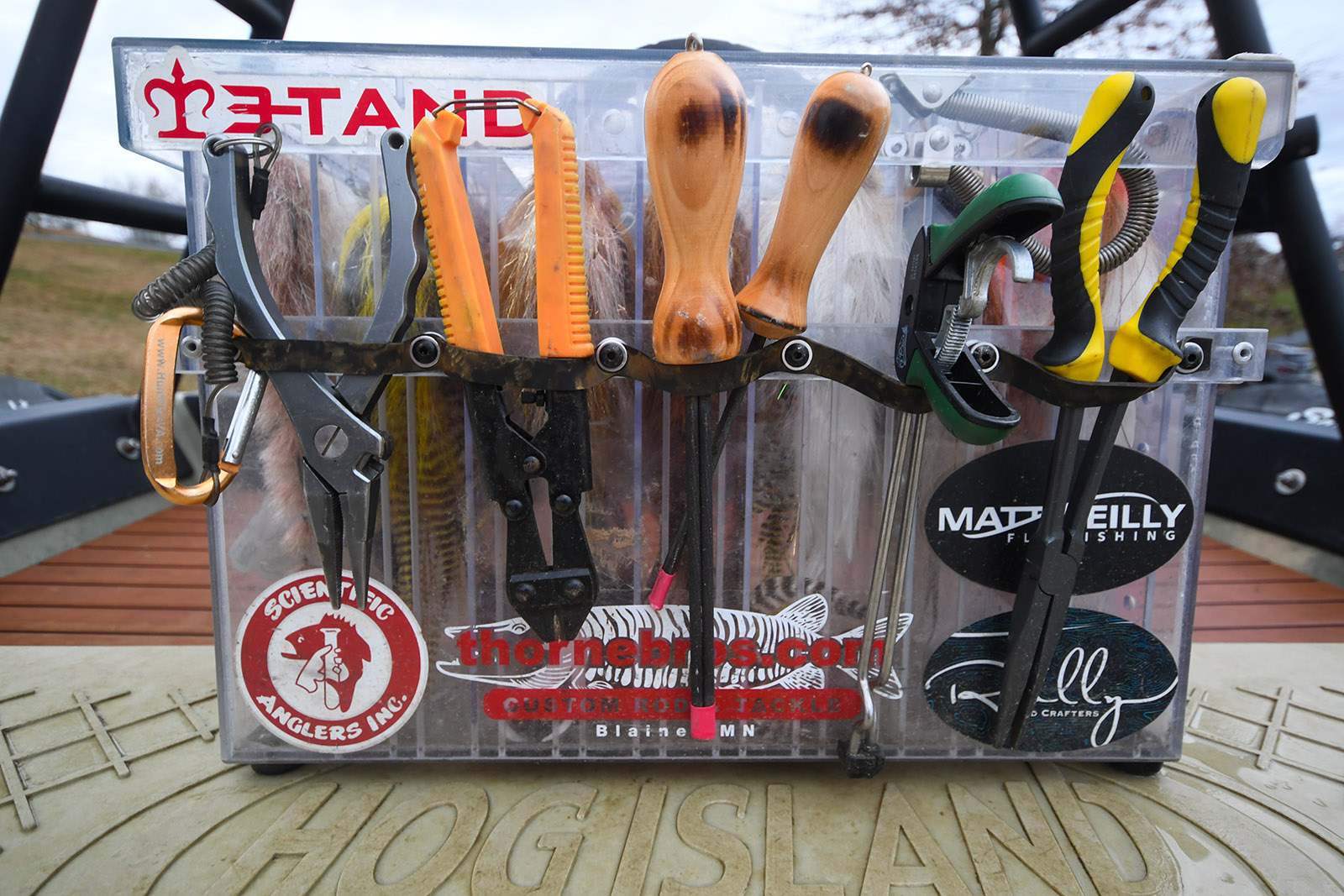
The first is a landing net with a bag large enough to keep a 40- to 50-inch fish comfortably in the water. Musky love to roll and thrash in nets, which can grab teeth, jaw mandibles, fins, and even gill plates in smaller fish and cause lasting damage. The most suitable nets have rubber, non-abrasive coatings, and small, one- or two-inch meshes to minimize harm to thrashing fish.
A pair of long, strong pliers for hook removal should always be on hand. When it comes time to unhook a musky, the further you can keep your hands from their razor-sharp teeth and the pile of hooks that are pinned in their mouth, the better. You can purchase a tool that will do this job from any hardware store or fishing tool manufacturer.
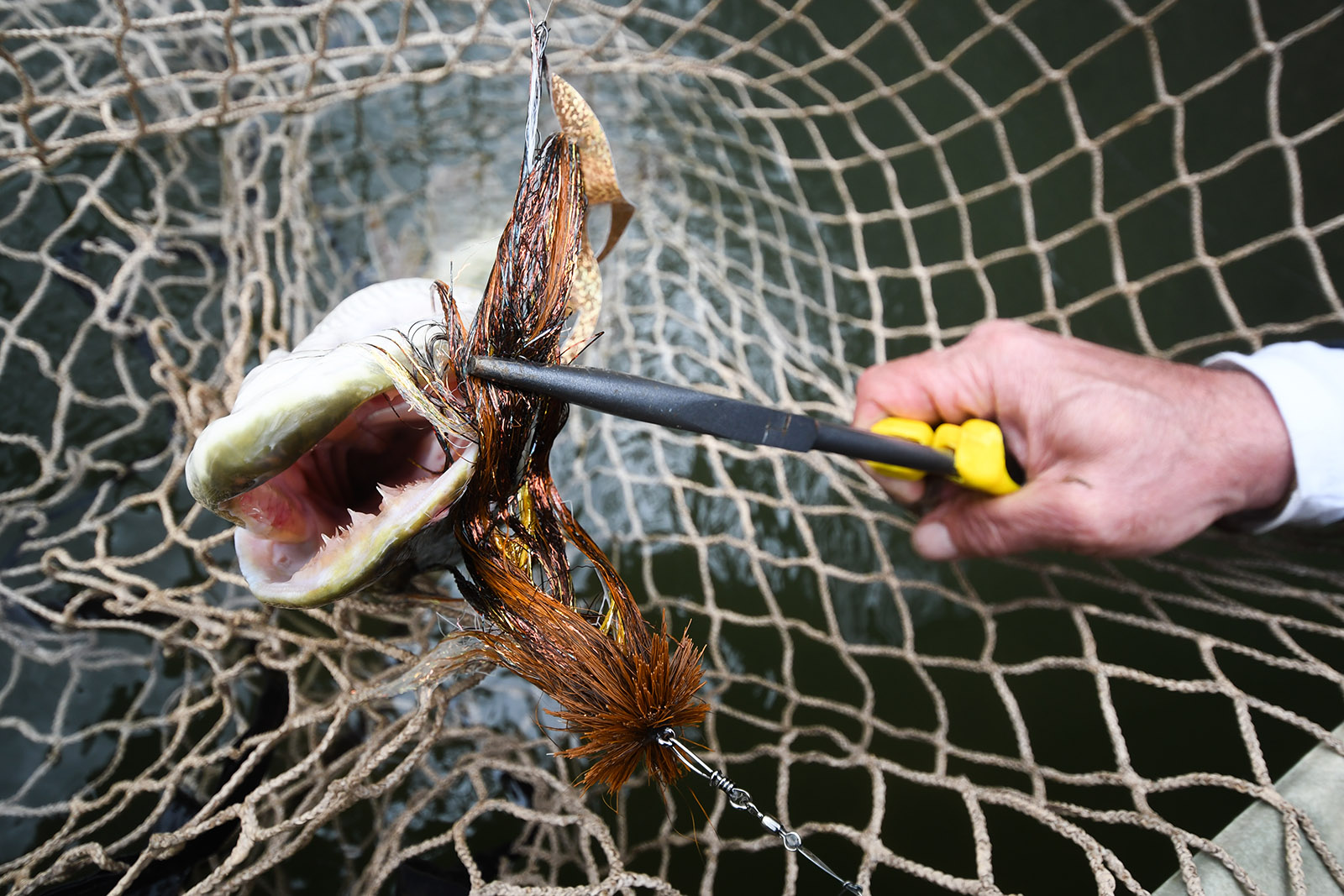
A good set of pliers can keep you unscathed from the musky’s sharp teeth.
A fish-handling glove is a good complement to a long pair of pliers. Even when lots of care is taken, it’s still possible to catch a tooth, gill raker, or hook, and a glove offers protection against all three.
Having removed hundreds of hooks from musky in over a decade of fishing for them, I’ve only been in a handful of situations where I’ve had to cut hooks out of a fish. However, I firmly believe that in nearly every one of those cases, cutting the hooks saved that fish’s life, or greatly reduced the physical trauma and stress it had to endure to be released. Thus, a quality pair of hook cutters should be in every conscientious musky angler’s tool kit. They can also double as a first aid tool, should you end up with a hook in yourself and need to cut it for removal.
Jaw spreaders can be very inexpensive tools, but their utility in opening a defiant fish’s mouth to remove hooks can’t be overstated. For years, I carried a standard pair of metal, spring-loaded jaw spreaders that opened to a very wide angle and had small, sharp points of contact with the fish’s mouth, and I used them sparingly because they were cumbersome and could do serious damage to smaller fish. A new ratcheting design, the O’Pros Out Tool, has proven much more useful and gentle on fish, particularly those on the smaller side, as they give the user easy and total control over the angle of opening.
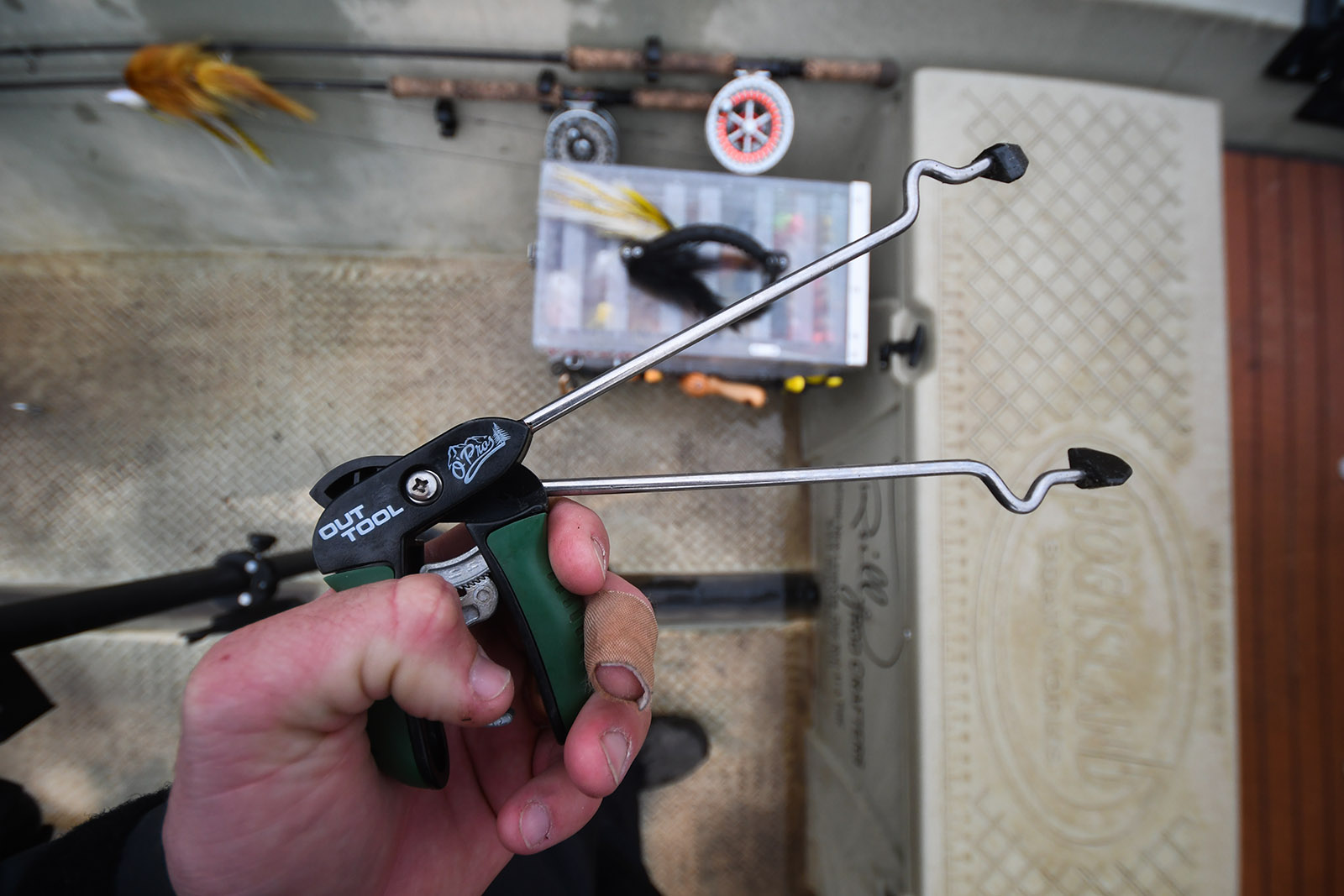
These jaw spreaders come in handy.
Lastly, always have a first aid kit on hand. Even with all of the aforementioned aids and precautions, it’s still possible to take hooks and teeth to the hands, and these wounds can be more than minor.
Handling Tips
Even with proper release tools, there are ways to harm fish when handling them that may result in death post-release, even if they swim off strongly. This concept is called delayed mortality, and while there are some instances of mortality in catch-and-release fishing that can’t be avoided, the rate at which it occurs can be drastically minimized by an angling population that strives to handle their catches responsibly. The vitality of all of our future fisheries depends on it, but this is particularly true in the case of a low-density, slow-growing fish like a musky.
Given the use of a large net, once a fish has been bagged, keep them submerged while you grab your release tools. Once unhooked, it’s a good idea to return them to the water inside the net while you ready a camera, so that the fish can be pulled out of the water for just a few seconds and a shutter click before being returned. Time out of water should always be minimized.
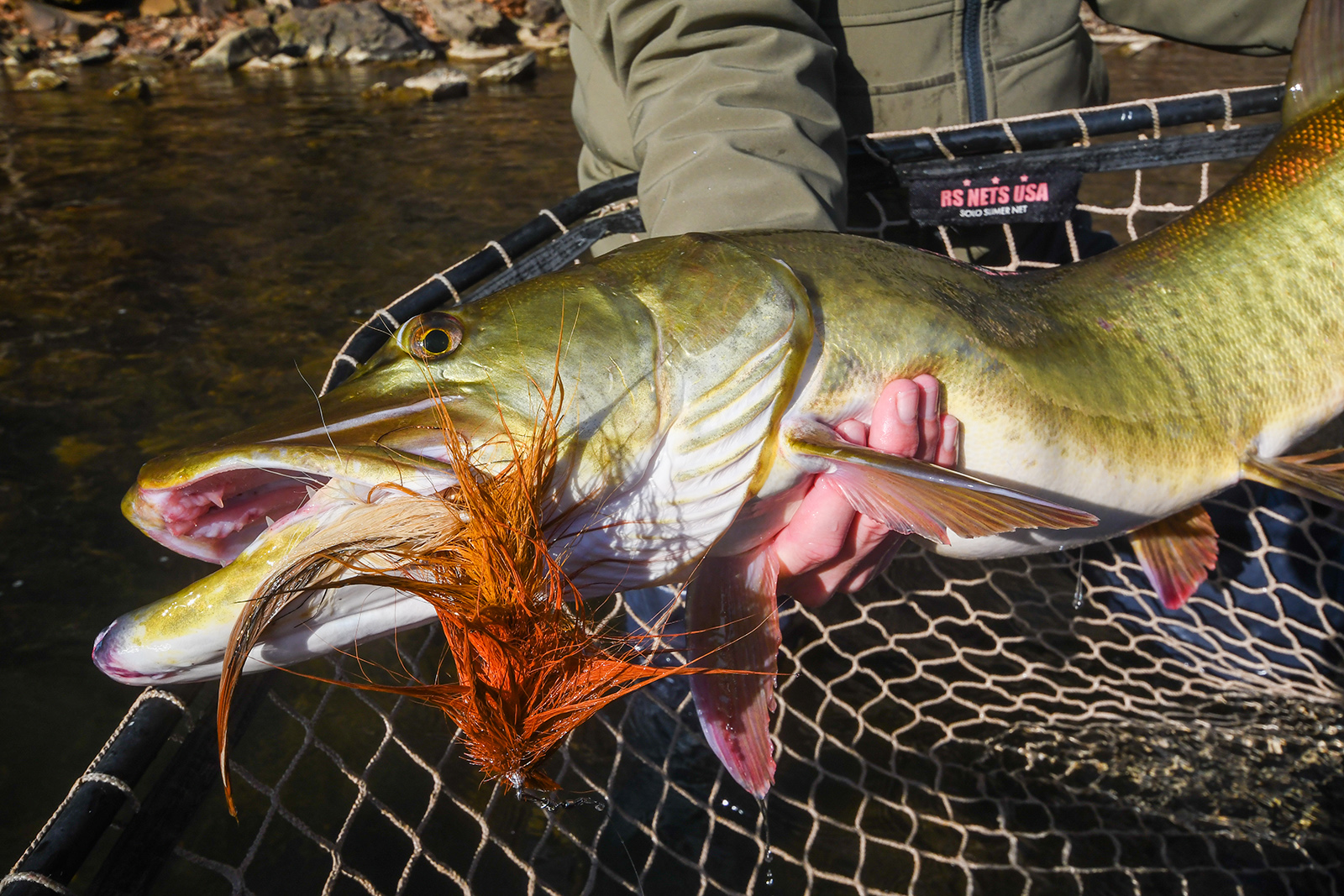
Minimizing time out of the water helps keep the fish healthy and safe.
When measuring fish, make sure to wet your measuring device, as dry surfaces can damage a fish’s protective slime layer. Your hands should always be wet when handling the fish for the same reason.
There are multiple safe ways to hold a musky, but all are horizontal.
One common hold is the gill hold, in which four fingers are slid up the inside of the gill plate (not grabbing the gill rakers) and a thumb placed in the natural groove under the fish’s jaw. Pressing these fingers together in this hold, while supporting the belly with your other hand, is a strong, safe way to control a musky’s head and support its body, and results in fewer fish being dropped.
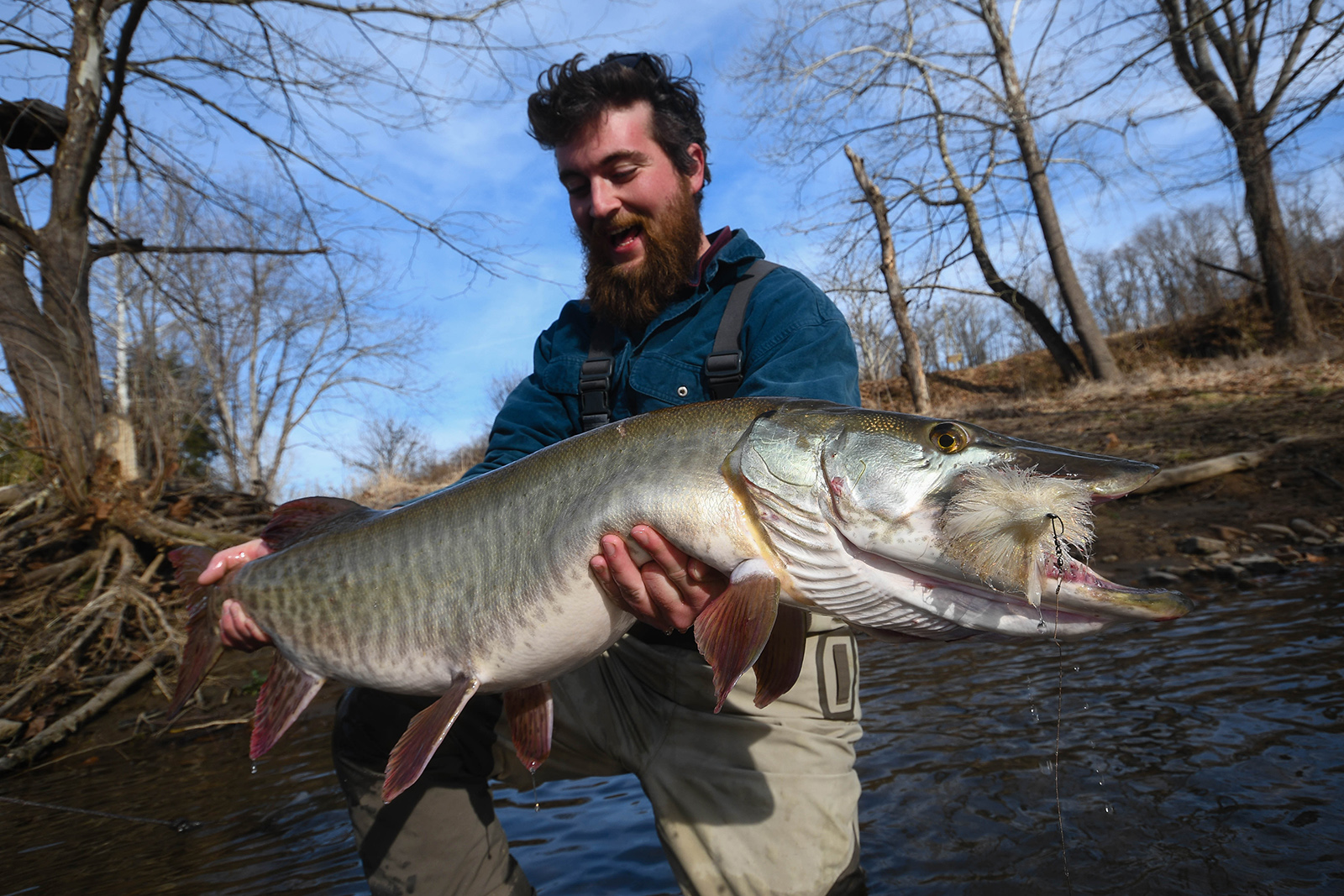
Holding a musky horizontally is key.
Another safe hold is a tail hold, wherein one hand grips the base of the fish’s tail and another supports the fish’s belly and head. This method is very safe for the fish, but doesn’t allow you to control the fish’s head strongly if it decides to thrash. For this reason, this hold should be used over water or the net to avoid dropping the fish’s head on a hard boat deck, rocks, or the ground.
When releasing a fish, hold it in the water by the tail, head facing upstream if in a river, and allow the fish to get comfortable and begin to flare its gills and attempt to kick its body and tail. If the fish indicates that it can maintain its belly-down stability in the water and has enough strength to swim off, give it a small push and allow it to swim off.
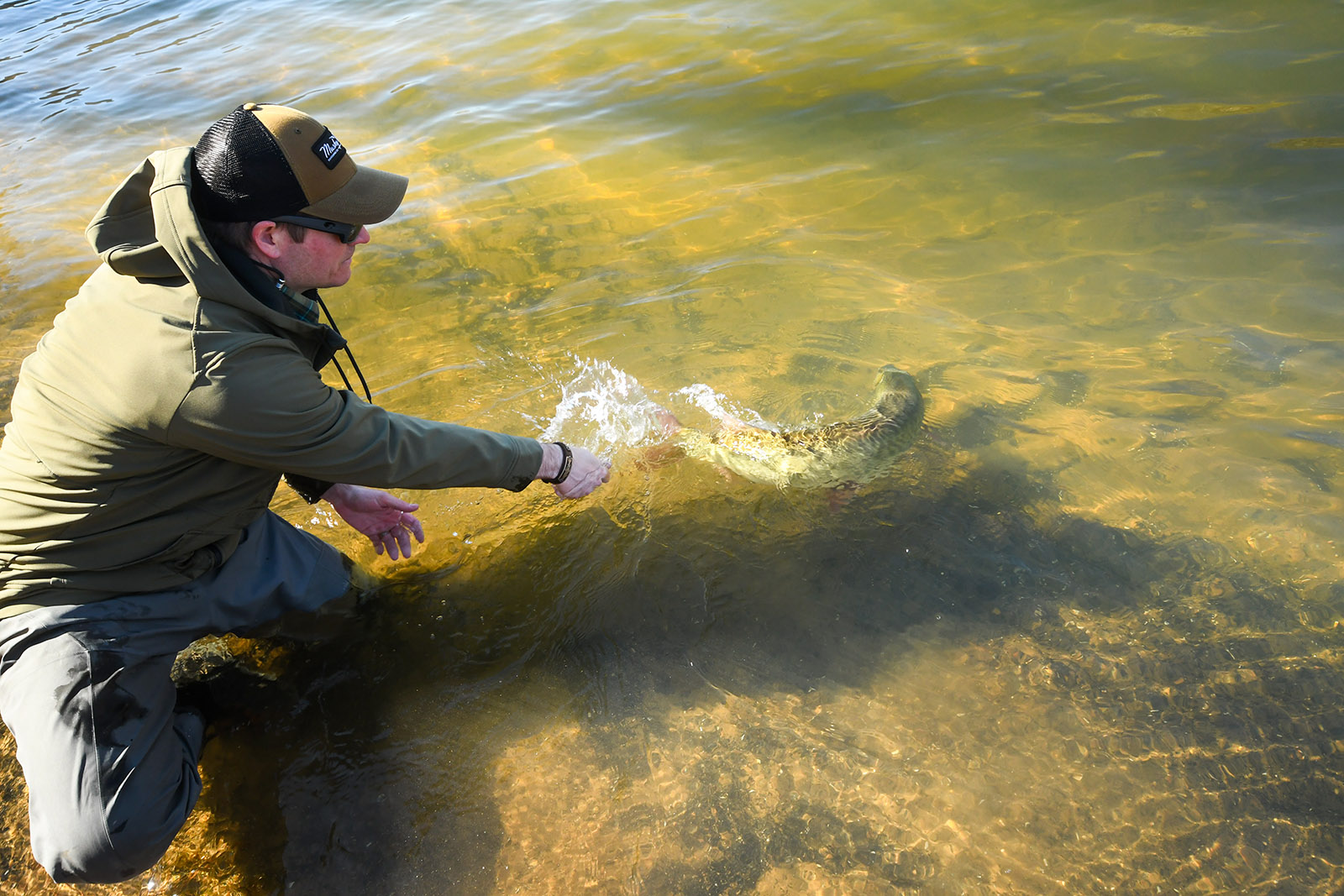
Minimizing the stress on the fish during the catch, dehooking, and release helps keep it healthy and able to swim into the future.
We are very lucky to have a thriving southern musky fishery in the state of Virginia. However, with that should come a word of warning. When our summer water temps begin to climb into the mid-70s, musky make moves to summer, cold-water refuges. Often these are spring seeps and creek mouths, and while these fish can be very visible and tempting to target, they are generally not feeding, but surviving. The warmer water becomes, the less dissolved oxygen it’s capable of holding. Dissolved oxygen is what fish pull from the water with their gills to breathe, and what they must have to combat lactic acid buildup that results from a battle with an angler. If dissolved oxygen levels are low enough to prevent recovery from this buildup, death occurs, often in the form of delayed mortality. Thus, it’s advisable to limit musky angling to water temperatures below 75 degrees.
Musky fishing is a wildly exciting, addicting, and rapidly growing sport, one that we’re incredibly fortunate to be able to enjoy in our home state. Taking steps to ensure the survival and health of the fish that we come into contact with as anglers has never been more important, and doing so will allow us to enjoy a tremendous fishery for many years to come.
Matt Reilly is a full-time freelance writer and fishing guide based in southwest Virginia.

